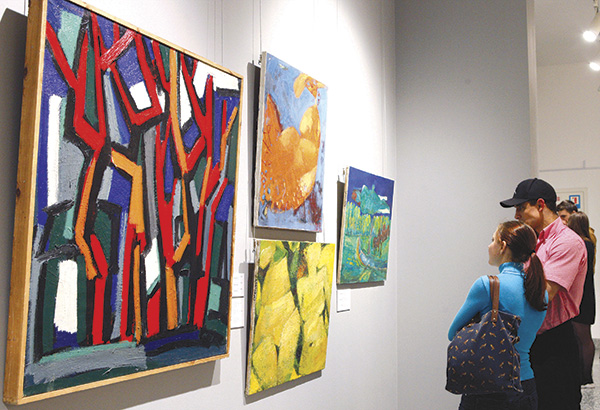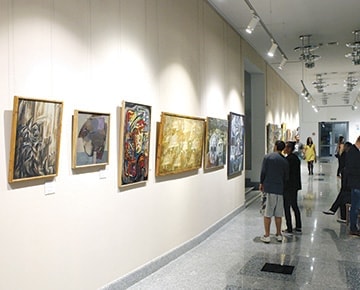
Exhibition from Andrey Plesanov’s collection dazzling in its originality
Soviet non-conformism goes by many names: unofficial, alternative, forbidden, experimental, underground art, and second avant-garde. Born from Marxist-Leninist ideology, or ideological redundancy, it emerged in the 1960s, reaching its peak in the late 1970s and early 1980s. It challenged the stance raised by official art at a time when Soviet art was losing its impact, unable to satisfy the spiritual and intellectual needs of society. A dichotomy existed between ideologically correct art (figurative and pro-realistic) and underground non-conformism (characterised by a rejection of all socialist realism canons, in content and expression).
The 1980s were the heyday of Belarusian non-conformism, reflecting changes in the historical paradigm of the country and the formation of ‘rejection culture’, which denied imposed artistic standards and canons. Historical truths affirmed by the highest officials were replaced by subjective truths, articulated by individual artists, transforming familiar images into abstract concepts.
Andrey Plesanov’s private collection is the richest and most representative of Belarusian non-conformist art. He began collecting in the mid-1970s, with the Artist’s Studio series and the Nu series. His first exhibition took place in 1987, in Minsk, and he added to his collection, over time, with individual canvases.

Inspiring audiences to ponder deeply
Interestingly, the current exhibition at Belarus’ National Art Museum is the first time that Mr. Plesanov’s non-conformist art has been showcased. The exhibited works create an overview of Belarusian non-conformism as an art phenomenon (similar to Soviet non-conformism) and demonstrate numerous styles and thematic approaches, characterised by irony, angst and the desire to convey individual yearning towards self-expression, asserting personal identity in the face of Soviet collectivism.
The exhibition features canvases by V. Akulov, A. Malishevsky, V. Savchenko and A. Zhdanov, exploring ‘homo sovieticus’ mentality, as well as works by V. Chernobrisov, L. Rusova, O. Matievich and V. Kachan, on our striving for internal freedom and emotional satisfaction. The works of A. Klinov, G. Skripnichenko, A. Molchanov, A. Belov, V. Petrov, A. PLesanov, V. Tsesler, G. Khatskevich, V. Bobrov, S. Rimashevsky, V. Zakharinsky, S. Malishevsky, N. Dundin, G. Tikhanovich, E. Buel, I. Tishin, A. Zabavchik, A. Globus, D. Surinovich, V. Stepanenko, V. Martynchik, R. Mai, A. Kuznetsov and I. Kashkurevich seek out a connection with avant-garde first wave artists, as well as with Western European surrealism, cubism and abstractionism. Meanwhile, Velikzhanin, I. Savitsky, K. Goretsky and S. Lapsha lean towards pure conceptualisation which was a point of return to the European art history for the Belarusian art.
Soviet non-conformist art did not initially intend to politically oppose official art, but became a rallying concept, as an expression of the individual’s reaction to the social state. Rather than being valued for aesthetic beauty, artworks are valuable for their cultural significance, in the pre and post-Soviet eras.

Matters to discuss
The National Art Museum has also hosted a series of events as part of the Socialistic Surrealism: Non-Conformist Art from Andrey Plesanov’s Collection exhibition which has actually become an important step for the museum in promoting knowledge of 1980s Belarusian non-conformist art. The exhibition was accompanied by lectures, from Alina Strelkovskaya, a research assistant with the National Art Museum, sharing her expertise on 1980s Belarusian Avant-Garde: Plan of Content and Plan of Expression; and from leading researcher Olga Arkhipova, on Art Perestroika: Andrey Plesanov and His Collection of Artistic Experiments.
A musical party was also organised, with the collection’s author — Andrey Plesanov — in attendance.
By Veniamin Mikheev











